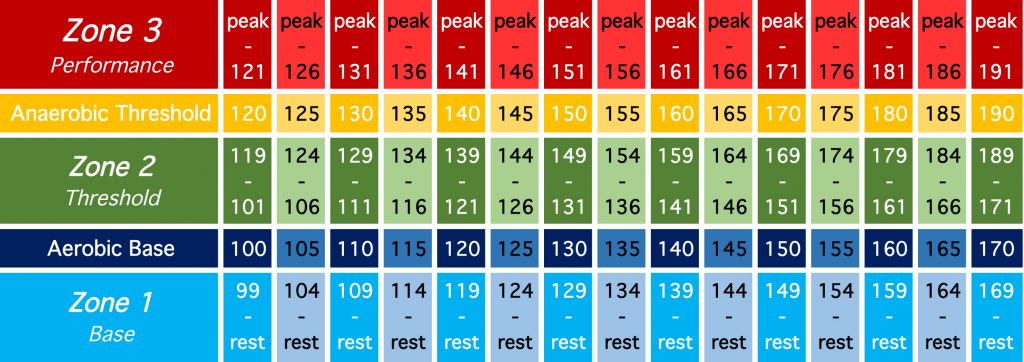Metabolic conditioning is more than just cardiorespiratory exercise. As a fitness professional, you need to be able to design a conditioning program for your clients that effectively addresses their unique physiology, as well as providing them the results they are looking for.
The term “conditioning” was once reserved exclusively for athletes, while “cardio” was the term used by the general population. In essence, they are the same thing. The only difference is in the application of the science.
If you want to become a Weight Loss Specialist, follow the link and start making a huge difference in the lives of your clients today!
What is Metabolic Conditioning?
Metabolic conditioning is more than just high intensity interval training (HIIT). A well designed, thought out, and executed conditioning program will provide the proper stimulus for the client that will reset their metabolism, allowing for better overall fat utilization, and ultimately better fat loss.
low intensity steady state (LISS) Cardio
Walk into any gym in the country and you are likely to see the treadmills, ellipticals, and stationary bikes filled with people who want to lose weight. The prevailing thought is that for weight loss, you must do cardio, lots of cardio. This had been perpetuated by the all-too-well-known “fat burning zone” that every piece of cardio equipment has plastered on it. I call this Low Intensity Steady State (LISS).
The popularity of HIIT training
Recently, there has been a movement toward HIIT training workouts as the exclusive form of cardiorespiratory training. Health clubs and trainers everywhere have begun instructing their members and clients to stop doing long, boring cardio sessions, and instead opt for HIIT training.
Among many of the cited reasons for HIIT training are increasing EPOC (or the afterburn effect) for weight loss and providing enough aerobic work for increased metabolism (which you can measure through Metabolic Equivalents).
The reasoning sounds logical, too. Spend less time doing cardio, burn more fat with high intensity exercise. Who wouldn’t want to do that? Unfortunately it’s not that simple.
It’s important to understand the physiology of energy systems during each type of training. During LISS, the body should be using the slow oxidative system, burning upwards of 70-80% fat for fuel. As the intensity of the session increases, the body starts to shift towards the fast glycolytic system, which is much faster at creating energy from glycogen, but cannot sustain this energy creation for as long.
To make sure your client is utilizing the proper energy system, it is necessary to train them according to the fitness level where they currently are.
3 Steps for Designing a Metabolic Conditioning Program
In order to create an effective conditioning program, there are 3 basics steps you need to follow.
- Determine baseline fitness level of client first
- Calculate heart rate training zones
- Design the workout plan
Let's dive into these more in depth, right now!
Step 1: Determine Baseline Fitness Level
You should always perform at least one cardiorespiratory fitness assessment, and then periodically retest. Without an assessment, you are doing nothing more than guessing. Here are the assessments I use for my clients:
Resting Heart Rate (RHR)
This gives you a good indication of where your client’s fitness level is currently. It correlates very well to VO2max, and other markers of cardiorespiratory fitness. It is also very easy to perform
Heart Rate Variability (HRV)
Heart rate variability, along with RHR, can provide invaluable insight into the effectiveness of your conditioning program. Over time, trends in HRV are powerful indicators that their conditioning is improving. If you are unfamiliar with HRV.
Modified aerobic threshold Test
There are a number of cardiovascular work capacity tests you can perform. The Rockport Walk Test, Forest Service Step Test, and the Cooper 12-Minute Walk/Run Test have all been validated numerous times as good assessments of fitness levels1. I prefer to use a modified anaerobic threshold (AT) test.
To perform the AT test, have your client wear a heart rate monitor, and choose the type of cardiorespiratory equipment that is most appropriate. If my clients are in good enough health, I prefer treadmill running. Whatever equipment is chosen, have them pick a relatively comfortable pace.
Every 2 minutes increase the intensity. Ask your client to rate where they are on the RPE scale (either the 1-10 or 6-20). MAKE SURE TO RECORD THIS! You must be able to duplicate the test in order to show progress.
Continue this until your client reaches an RPE of approximately 7-8 on the 10 point scale, or 14-16 on the 20 point scale (hard/very hard). RPE has been correlated as a reliable way to monitor exercise intensity, and it does not require fancy or expensive equipment2.
Once they have reached that point, record their heart rate, and have them sit down. We will use the heart rate at the stopping point to calculate training zones in Step 2.
Heart Rate Recovery
Immediately following the assessment, measure your client’s 60 second heart rate recovery (HRR). This is valuable information to have since HRR is tied to parasympathetic nervous system activation – something that is extremely important for overall health3.
Step 2: Calculate Heart Rate Training Zones
Nothing confuses people more than trying to figure out heart rate training zones. With all of the companies that are making heart rate monitors, it’s no wonder that your clients find it difficult to figure out at what heart rate they should train.
In order to simplify this, I like to use a 3 zone system, rather than the more common 5 zones. I find that unless your client is an athlete that requires a much more dialed-in program, the 3 zone system works great for general fitness goals.
how to Calculate heart rate training zones
Once you have your AT heart rate from the modified AT test, it is simple math to determine the zones.
Take the AT heart rate and subtract 20 beats. This is your client’s Aerobic Base (AB), the point that they should be the most efficient (i.e., use the most fat). Now that you have your AT and your AB, we can calculate the zones.
Here is a chart that simplifies it for you.
the heart rate training zones
Zone 1 – Base
The first zone is the lowest intensity and therefore, the lowest heart rates. The purpose of training in Zone 1 is to increase the body’s ability to utilize fat as a fuel source. The intensity is low enough that you can utilize higher volumes, but not so low that no training effect is achieved.
Zone 2 – Threshold
When training in this zone, your client will be improving their ability to use fat at higher intensities. I prefer to use what I call Moderate Intensity Interval Training (MIIT) in this zone as a way to enhance overall work intensity, while still being able to work at high enough volumes.
Zone 3 – Performance
Above the AT is the performance zone. When training at this level, your client should not be able to maintain that pace for very long. For most clients, only small doses of Zone 3 intensities are required to see amazing results, and some may never need to train here and still see tremendous benefits from their conditioning.
Step 3 – Design the Plan
The most important aspects of designing an effective conditioning program are intensity and volume. I usually err on the side of being too conservative in my programming than too aggressive.
Stage 1 - First 4 weeks
Depending on the initial fitness level, you should have your clients perform Base training exclusively. This will help to re-train their bodies to be able to better use fat for fuel, and acts as an active recovery for the strength training sessions you are also doing with them.
I try to avoid having my clients do any more than 45 minutes of Base at a time, as the longer the session lasts, the greater the increase in cortisol production which can lead to inflammation and be counter productive4.
Stage 2 - Next 4 weeks
In the next phase you can start to have your clients increase the intensity by substituting 1-2 Threshold workouts for the Base workouts. This is where the MIIT training comes in.
Since the intensity is going up in this phase, the volume must come down. Have your client perform 3-5 intervals of 5 minutes in the Threshold zone, followed by 5 minutes in the Base zone. This 1:1 ratio of work to rest works great at increasing the overall intensity while allowing enough time to recover before the next interval.
Over the course of the 4 weeks, as your client continues to improve, you can start to increase the volume, but do not add more intensity. Either increase the duration of the intervals, or increase the number of intervals to add more volume to their training.
Stage 3 – Last 4 weeks
In this phase you will start to have your client do some Performance zone work. By this point they should be ready to add the intensity as they have been increasing their ability to use fat more efficiently for the last 2 months.
This is where you can add in 1 HIIT session per week as a replacement for a Base workout. For most clients that do conditioning three days per week, you should have them start the week with the Performance workout, followed by a Base workout that will aid in recovery, and the last workout will be a Threshold session.
I have found that this cadence works extremely well as it gets the hardest workout out of the way early in the week when your clients motivation levels are typically the highest.
summary
Understand that conditioning is important for all of your clients, not just your athletes. Designing an effective program takes some planning, but once implemented, can provide amazing results for your clients. Follow the 3 Steps Outlined:
- Determine Baseline Fitness
- Perform the assessments that you deem the most appropriate for your client.
- Reassess them periodically to make sure they are progressing
- Calculate Training Zones
- Use the chart provided or just calculate them out
- Design the Program
- Make sure that the intensity and volume of work are appropriate to your client’s fitness level, as well as their lifestyle.
One last thing. These are meant to be guidelines for design an effective program, not rules. Modify the variables as appropriate for your clients.
Speaking of cardio and conditioning, check this blog out if you are training youth athletes how to run properly. If you'd like 5 creative ways to customize cardio programs, be sure to follow the link!
References
- Shephard, Roy J., et al. "Standardization of submaximal exercise tests."Bulletin of the World Health Organization 5 (1968): 765.
- Herman, L., et al. "Validity and reliability of the session RPE method for monitoring exercise training intensity: original research article."South African Journal of Sports Medicine 1 (2006): 14-17.
- Cole, Christopher R., et al. "Heart rate recovery after submaximal exercise testing as a predictor of mortality in a cardiovascularly healthy cohort."Annals of internal medicine 7 (2000): 552-555.
- Hill, E. E., et al. "Exercise and circulating cortisol levels: the intensity threshold effect."J Endocrinol Invest 7 (2008): 587-91.
















